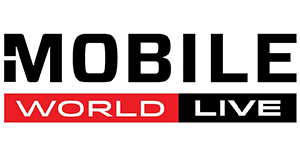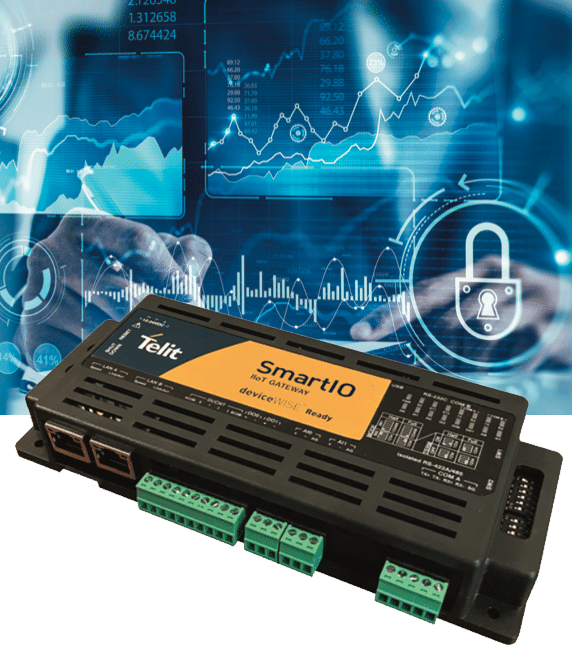
Executive Summary
When governments began implementing COVID-19 pandemic lockdowns in early 2020, the manufacturers best placed to maintain business continuity were those furthest along in automating production and performing critical operations remotely, including predictive maintenance. Manufacturers worldwide have taken note. A growing number seek to accelerate their adoption of Industry 4.0 practices and industrial Internet of Things (IoT) platforms.
A successful IoT deployment helps manufacture assets, maintain machines, automate processes and use data to improve manufacturing from design and production to quality control and delivery. It can also streamline the supply chain and enable new revenue-generating service deployment, especially when enabled by private and public 4G and 5G networking advances.
Though manufacturers understand the importance of IoT in making manufacturing smarter, they are currently navigating challenging business environments. If an IoT deployment appears too complicated or costly, manufacturers are likely to stall investment, even at the risk of losing ground to their competitors. Mobile network operators (MNOs) already play a key role in fostering and developing mobile IoT deployments. As 5G network coverage extends, MNOs will be in a prime position to harness 5G’s inbuilt capability to support Industry 4.0 applications. For this to happen, however, technology and service providers, including mobile network operators (MNOs), will need to ensure IoT solutions are secure and easy to install and operate.
In this white paper, we will address:
- The growing need for a secure IoT
- Obstacles to IoT deployment within manufacturing
- The advantages of an IoT deployment that capitalizes on 4G/5G mobility to connect densely distributed sensors and machines
- Simplifying secure data exchange between manufacturers’ legacy operational technology and IT systems
- How manufacturers can harness 4G/5G connectivity to provide new services
Making IoT a 5G Growth Opportunity
Ongoing advances in 4G and 5G wireless technologies, cloud computing, artificial intelligence, edge computing and sensor technology are combining to make it possible for more manufacturers to envisage building out a cost-effective IoT. Doing so means they can capture and analyze data in real time, enabling people and systems to make and act on complex, well-informed decisions more quickly.
At the same time, the impact of the COVID-19 pandemic has forced manufacturers to reconsider how they operate as they look to keep employees safe through a combination of social distancing measures and remote working while also ensuring business continuity. As a result, many are looking to accelerate their digitization programs. Areas of focus include IoT systems to capture and analyze data that can be used in preventative and predictive maintenance, as well as remotely managed asset management systems for shop-floor machinery. Although building or extending an IoT system to increase automation and data-driven decision-making sounds like a sensible business decision, it does not mean manufacturers find it simple to do.
Indeed, Gartner’s recent report described today’s IoT market as being in the trough of disillusionment due to the failure of IoT experiments to deliver on their promise.
Even though Gartner points out that some companies have struggled to implement IoT systems, it nevertheless categorizes the IoT as a transformational technology. Gartner believes the IoT market is on the cusp of a growth period, driven in part by technology advances.
IoT technology is so important because it “has the potential to impact many areas of the supply chain in a broad and profound way,” according to the research company. Indeed, Gartner estimates that “installed IoT endpoints for manufacturing and natural resources industries are forecast to grow to 1.9 billion units in 2028. That is five times from 331.5 million units in 2018.”
There are several reasons why some manufacturers are running into trouble with IoT deployment. One is that not every company is drawing on the same depth of in-house technology expertise. Indeed, IDC contends that the impact of COVID-19 on IoT spending “may further widen the divide between the two types of IoT adopters – determined advanced users and those who were struggling to understand ROI and monetize their IoT initiatives and to go beyond mere data collection.” Companies already benefiting from IoT are in an excellent position to build on their knowledge and experience to take a greater lead, argues IDC. In contrast, those unable to see clear benefits will fall further behind.
As the rollout of 5G networks continues, MNOs and other technology providers in the IoT ecosystem will need to address the challenge of simplifying IoT adoption across all industrial sectors. Manufacturing is particularly well-placed to benefit from 5G’s low latency, high bandwidth connectivity and network slicing functionality, enabling the creation of operational networks with virtually separated network resources. There is also a migration path toward 5G from private or public LTE networks, which manufacturers can deploy today to benefit from IoT deployments powered by carrier-grade mobile services.
Staggered Deployments
Before the COVID-19 pandemic, not all vertical manufacturing sectors felt the same pressing need to adopt smart, data-powered, highly connected manufacturing. IoT lies at the heart of Industry 4.0 deployments. Its aims include using data to automatically detect, analyze and implement ways to improve productivity, product quality and the use of resources while avoiding outages. The GSMA report “5G for Smart Manufacturing’’ found that highly regulated sectors such as food and beverage and pharmaceuticals have adapted Industry 4.0 technologies more quickly because they need to demonstrate the final consumer product’s traceability. Industries with low margins and high volumes, such as white goods and automotive manufacturing, have also moved to more automated, real-time systems to increase productivity and reduce costs. Bespoke manufacturing, in contrast, has been slower to embrace Industry 4.0 practices.

However, even the manufacturers that until recently have felt little impetus to invest in IoT can start to realize benefits today. Some manufacturers, for example, still have employees manually noting down information on the shop floor. They can gain from digitization by equipping their existing machinery to capture and display information in real-time, enabling them to reduce data collection errors while speeding up reporting.
For other manufacturers, it is a question of ensuring that employees who work on a site are more versatile and have the information they need to perform multiple discrete tasks. This can be done, for example, by gathering data from numerous hardware and software sources to create instructions for tasks that are then displayed on a single screen.
For companies that have already made good headway in using IoT to deliver smarter manufacturing, the focus may be on improving logistics across the wider supply chain. For example, they may be looking to use sensors to record physical shocks or humidity changes, as third parties handle their raw materials or finished goods.
Get Your Manufacturing Plant IIoT-Ready with Telit deviceWISE®
Of course, manufacturers can gather data to improve end-customer service as well as machine performance and maintenance. Illycaffè, for example, worked in collaboration with the engineering company, Bluewind, to design a networked, professional coffee machine for use in retail coffee outlets. The solution uses the Telit IoT platform to maintain many SIM cards on connected devices and maintain tight traffic billing control. The coffee machine uses wireless communications to transmit service data, monitor consumer choices and support maintenance services. The results help baristas and the company optimize both customer service and coffee machine maintenance.
Making Better Predictions
One of the most important areas of growth for IoT within manufacturing is predictive maintenance. Predictive maintenance relies on sensors to gather a wide range of data such as temperature, pressure or movement from equipment on-site. Software can then analyze the information captured from machines in real time and flag up any anomalies that indicate an immediate need for maintenance or calculate the likelihood of an outage in the near future. It enables rapid intervention that reduces expensive downtime and is much more efficient than manually checking equipment.

Should issues arise in the meantime, augmented reality applications can allow manufacturers to provide remote assistance to their sites and their customers’ sites. By putting a remote expert in touch with a technician in the field, companies can make the most efficient use of their employees’ skills and time and reduce service costs for them and their customers. Remote assistance is a particularly critical service for manufacturing. The outage of a machine tool or a coordinate measuring machine can hold up production or inspection and make a large dent in throughput and profitability.
Regardless of their business focus or how far they have gone in IoT deployment, all manufacturers face a common challenge. All manufacturers need to integrate mission-critical operational data into IT systems. For this integration to happen, common enterprise software applications and servers must be able to handle data collected from operational equipment, including PLCs, CNC, sensors and robots.
Tapping into Siloed Data
Traditionally, operational technologies, such as machine tools and laser cutters, have not been connected to the broader enterprise IT network or equipped to communicate outside their silos. Any efficient IoT communications platform must be able to facilitate data exchange between an evergrowing number of operational machines, sensors and IT systems across the plant. It also must be able to do so securely while enabling manufacturers to increase their mobility use, especially as they move towards greater deployment of cloud-based analytics and edge computing systems.
Telit has drawn on its IoT expertise to overcome the many obstacles manufacturers face when establishing future-proof, wireless IoT networks, including the need to facilitate IoT data exchange across a wide range of operational machines and IT systems securely.

For example, Telit deviceWISE EDGE® IIoT platform makes it possible for an IT system to talk to any controller, PLC, CNC or robot within a manufacturing plant, using 4G or 5G cellular gateways to collect and transmit data securely or create data visualization or HMIs. The Telit Smart IO Gateway enables manufacturers to collect data from all their existing operational assets no matter how old — a real concern, given that manufacturing machinery can be in use for a couple of decades. Telit deviceWISE can then map data to and from enterprise systems, such as SAP, IBM, Microsoft, Oracle, and other SQL and web services. Telit deviceWISE does all the device management, pushing data into Azure, AWS and Siemens Mindsphere cloud-based systems and opening direct tunneling to devices.
Manufacturers Develop New Revenue Streams
Once legacy operational manufacturing machines are plugged into an IT system, users can rely on secure 4G/5G access to manage and operate machines remotely as a single system, taking action as easily as if they were onsite. This approach opens new business models for machine builders, which can tap into IoT to offer maintenance and calibration services to customers worldwide.
Instead of merely selling a machine to a customer, for example, an international machine builder can use Telit deviceWISE to sell hours of operational uptime, based on the real-time data it collects from the equipment it installs on customer sites. Remote monitoring using secure 4G or 5G networks enables the machine builder to provide predictive maintenance and ship any necessary spare parts before outages occur. It can also offer calibration services as and when they are needed. Most importantly, for its long-term competitivity, the machine builder’s research and development team can analyze the data to understand how customers use its machines and develop new ways to improve performance and cost-effectiveness.
With secure LTE or 5G networks, manufacturers can envisage securely gathering real-time data and statistics from thousands of machines on customer sites to improve end products and quickly adapt to changing customer requirements.
MNOs worldwide are using Telit’s deviceWISE and IoT cloud platform to provide secure IoT services to customers running directly on their 4G or 5G networks. By loading Telit deviceWISE onto the mobile network towers, operators can make it possible for manufacturers to remotely access devices in factories and collect data on a 5G network without having a physical node on a customer site. Instead, they use a Telit 5G module or deviceWISE on the cellular gateway or the cloud infrastructure.
MNOs also rely on Telit’s out-of-the-box IoT solutions to provide IoT services in the oil and gas sector. Using 4G cellular networks, cellular gateways and Telit deviceWISE, MNOs can enable customers in extractive industries to collect data from industrial devices, POCs, pumps and engines, even as they move around.
The COVID-19 pandemic has heightened manufacturers’ awareness of the advantages of using an IoT to drive automation and simplify operations so that fewer employees need to be present on a site at a given time. At the same time, moves to expand IoT deployments have revealed the limitations of the traditional approach by manufacturers of trying to combine different hardware and software components without the support of a unifying platform. As manufacturers deploy and grow IoT deployments to create smarter, more automated operations and processes, they will need support from the mobile industry to deploy secure, flexible, future-proof systems within a heterogeneous environment. In this way, manufacturers will be able to harness the wide use of the sensors, connected machines and IT systems that will allow them to compete within a more automated and data-driven manufacturing environment.


